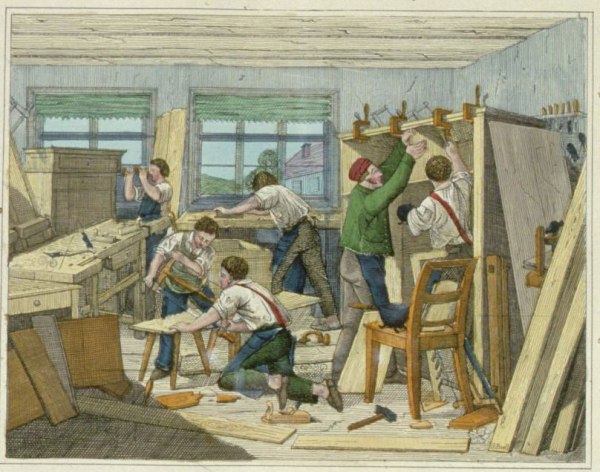Interview in the ‘Australian Wood Review’ –

Earlier this year, Linda Nathan of Australian Wood Review interviewed me for a short piece in the magazine. While she didn’t ask me what was my “drag queen name,” she did ask some interesting questions. Here they are.
What are the core principles you teach students?
I am a reluctant teacher to be sure. I study the craft every day. I work at the craft every day. And I write about it every day. I don’t think that qualifies me to teach it, however, but I am asked to do it, and so here is what I teach:
There are lots of new things to be discovered in woodworking. And the fastest way to learn them is to embrace all the work our ancestors have done for us. Read everything old that you can get your hands on. Try to understand the world they worked in. Understand their tools. Understand their mind-set. If you can do that, you will obtain skills a lot faster than if you tried to hack a path forward on your own.
So I spend a lot of time trying to explain that L. P. Hartley is right: “The past is a foreign country; they do things differently there.”
Plus one more thing from my woodworking hero, John Brown: “By all means read what the experts have to say. Just don’t let it get in the way of your woodworking.”
So respect and understand the past. But be prepared to reject it.
What is more important, the making of a piece or the piece itself?
In my shop, they are equal. If the piece sucks, then the time was wasted. If building the piece destroyed your lungs, health, mental state or the world around you, then maybe you should have just shopped at Ikea.
What is sharp?
Sharp is easy. It’s the zero-radius intersection of two surfaces. Getting there is what makes woodworkers crazy. The truth is that every system works. What I hope woodworkers will do is practice sharpening “monogamy” – stick with a system for at least a couple years so that you can learn its ins and outs. It takes time to fully master oilstones, waterstones, sandpaper, whetstone grinders, the sidewalk outside their house or whatever.
By sticking with one system, you’ll find your edges improve over time. Jumping around from system to system is only going to make you confused and poor.
Who are/were the greatest woodworkers on earth?
I’m a writer, so I always frame that question in terms of people who were able to explain the craft through words and images. Without any doubt, Charles H. Hayward was the giant of the last 100 – perhaps 200 – years. His traditional (somewhat brutal) training, artistic talent and straightforward style make him an influence in woodworking that has yet to be matched.
Yet, I have no idea if his joints were tight and his surfaces fair.
From a purely technical perspective, I admire the Hall brothers, who produced the furniture and millwork for Charles and Henry Greene. Their accomplishments, which I have viewed first-hand – haven’t been equalled in the last 200 years, at least in North America.
Your desert island tool kit would be?
Hey, I wrote a book about that, “The Anarchist’s Tool Chest,” which details the 50-odd tools that allow you to build almost any piece of furniture. That is, if you need a highboy in your treehouse. However, after reading “Robinson Crusoe,” I think all I’d really want for a desert island is something that could crack coconuts and make a bow and arrow.
The best thing you ever made? Why?
That changes every week. Right now, I’m enamored with the campaign chests and Roorkhee chairs I’ve been building for a forthcoming book on campaign and colonial furniture. The stuff is so masculine – combining simple designs with mahogany and beautiful brasses. The stuff makes me want to smoke a cigar, even though I don’t own a pith helmet or a gun.
From an emotional perspective, I’m most proud of two reproduction Shaker pieces I built and donated to the Whitewater Shaker colony, which is in our back yard.
The worst thing?
Easy. It was my first project for the cabinetmaking course I took at the University of Kentucky in 1993. It was a blanket chest. My finger joints were so horrible that I had to screw them together to make them stay fixed. Then I used an awful water-base finish that made the chest look like albino beef jerky.
I hated the thing, but my wife and kids used it all the time. Finally, one day while she was away at work, I handed it over to the garbagemen. Catharsis.
The thing you like most about woodworking?
I love that you can never know it all. Heck, you’ll never even know 10 percent of it. You can study every day for the rest of your life and still be a piker when you die.
So it’s never boring. Every day is an opportunity to learn something new and make something beautiful – what’s not to like about that?





